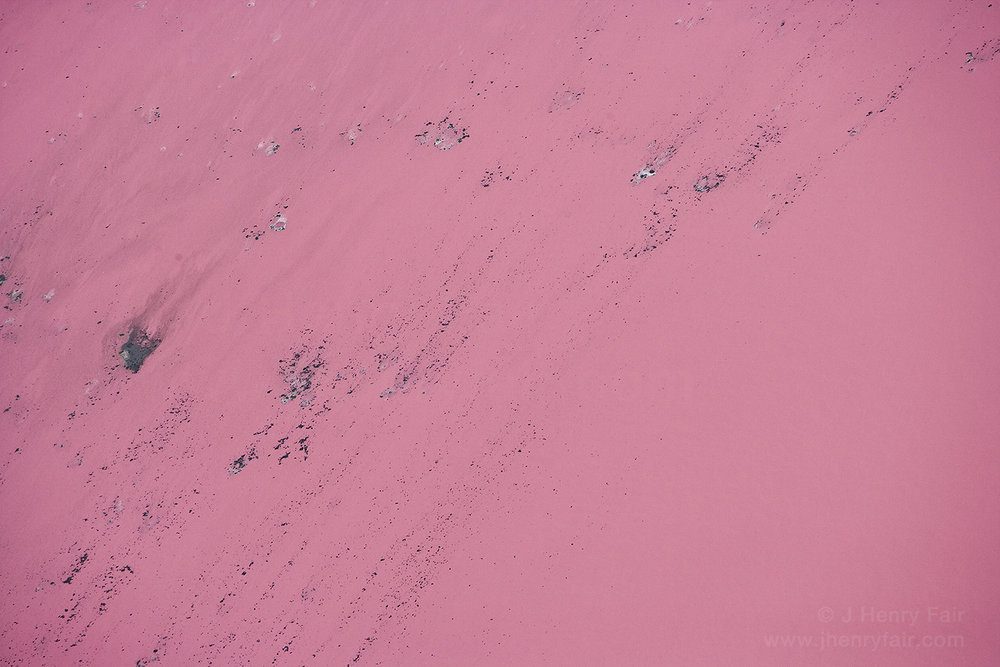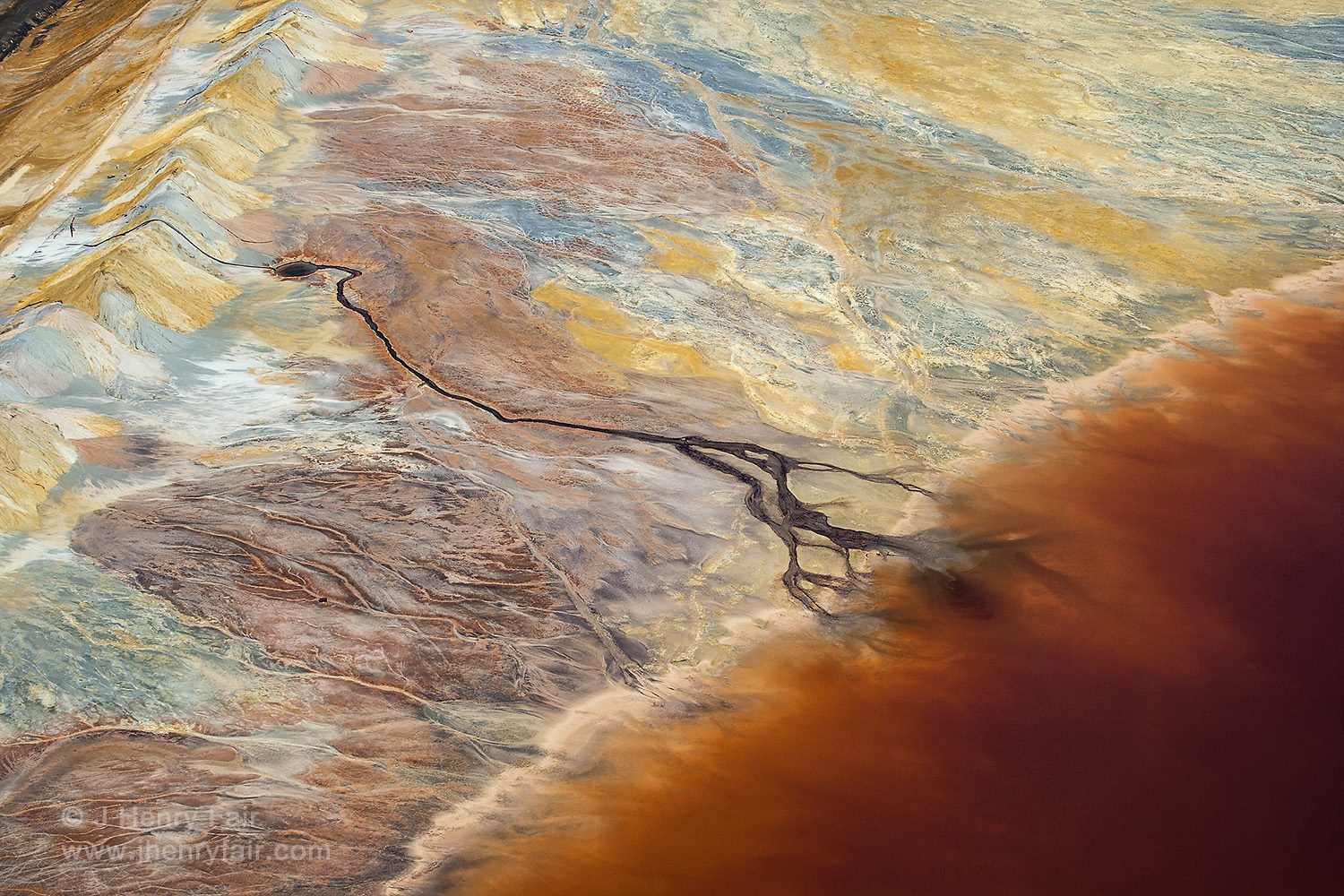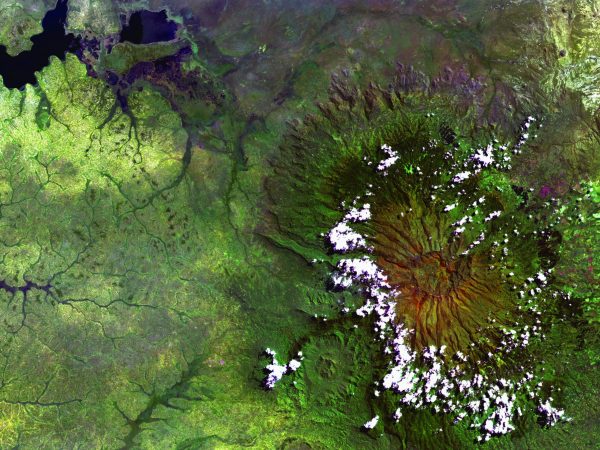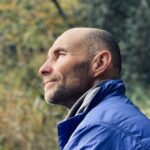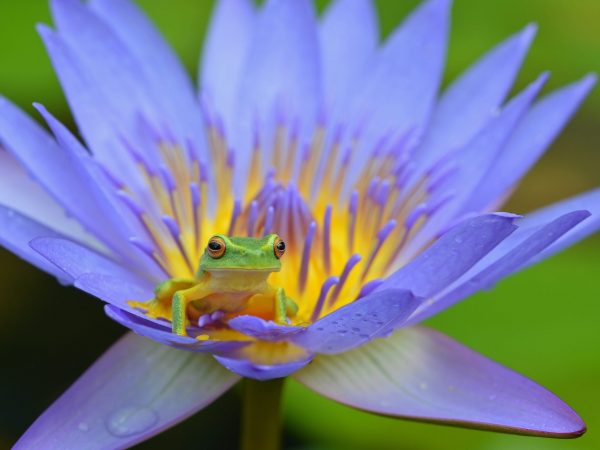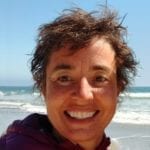Kristin Barker (KB): Images in your Industrial Scars project seem to take the ugliness of environmental catastrophe and transform it into beauty. How do you think about the role of beauty in these images?
J Henry Fair (JHF): You know, the pictures only work because they’re beautiful. Beauty is something that stimulates a sympathetic, pleased response in the viewer. Only if these images stop people and make them pause from using their smartphones for one second, from that text that’s coming in, only then will they take the time to think about them, and the cognitive dissonance that’s created by seeing something which is horrible but compelling at the same.
KB: So you’ve got to have the beauty to pull the person in and hold them there . . .
JHF: Sure—for them to even consider the message.
KB: Right:“Wow! That’s beautiful! What is that?”
JHF: Exactly! And as soon as they say, “What is that?” I’ve got them. That’s exactly what I’m after: “Hey, what is that?” And then hopefully we can also stimulate the question, “Well, what’s my part in that?”
KB: When we look at the deep interdependence of all of life, including the Earth, as one entity, then that’s part of who we are. So when we look at your images, we experience a wounding, not as something out there, but of our own larger self. Your work seems to illustrate this understanding for when we look at these images, it can hurt. And the fact that it hurts is proof that we’re deeply connected. Do you personally have any sense that you’re telling that story, that this is the wounding of our larger body?
JHF: Very much. I have started referring not to the environment—and I really don’t like this phrase, “Oh, we’re destroying the planet.” No, we’re destroying ourselves. This idea of humans being separate from nature is of course a ridiculous idea, and totally unworkable on any level.
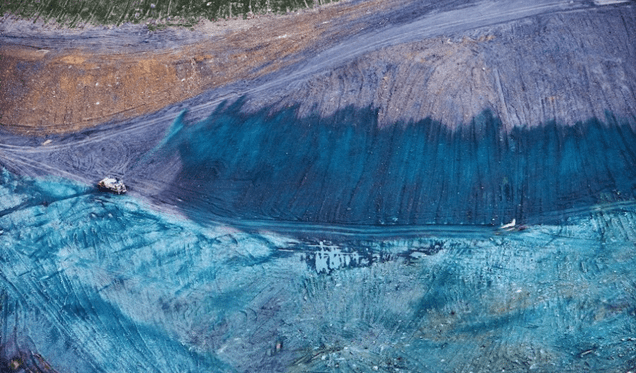
KB: One of the unique aspects of your images is how they convey the shocking scale of industrial wounding. In viewing a single image, we might get a felt sense of the harm we’re doing to the Earth, from the microscopic to the landscape level. How does scale factor into your images?
JHF: Well, that’s one of the reasons why the images are so effective, is trompe l’oeil, that they do play with our perception of space, which I do purposely of course by looking for abstract patterns, and then including one small detail to give the viewer a clue as to what’s happening there. So yes, I’m playing with those things—those senses of scale—purposefully. … I want to create something that is on the first glance abstract, but beautiful, using these Renaissance rules of perspective and light and dark to create an abstract piece that pleases the eye. But then I will include some little reference to reality that brings the viewer back to understanding that, no, this is real, this is happening . . . And also to give some inclination that something is amiss. So maybe it will be just a little barrel floating in this ocean of waste. Or maybe a tiny little bulldozer. Or pipes lying on what could be an abstract mountain range, and then suddenly you see this detritus of pipes.
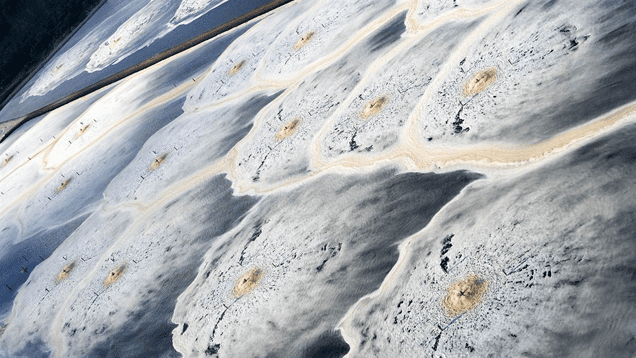
KB: Your Industrial Scars project shows us how human activities such as petroleum extraction in the Alberta Tar Sands, mountaintop removal coal mining, hydraulic fracking, and factory farming are harming the Earth. For many of us, these activities are occurring far away, out of sight. Buddhism as a practice invites us to look at things as they really are, with the full understanding that just doing that is a courageous practice. And that once we see how things are, then it falls to us to make the connection between insight and action. Does this perspective express something of what you’re after in your images? Are you looking for people to change their actions as a result of actually seeing what’s happening?
JHF: Yes, my long-range goal is to get people to change their actions. Because we know that the flap of the butterfly’s wing on one side of the planet causes a storm on the other. That smartphone that I decide not to buy saves the life of a lowland gorilla in the Democratic Republic of the Congo [where a metallic ore used to make cell phone capacitors is mined]. This chain exists. We can’t see this chain—our economy hides it from us—but this causal chain exists. It’s a fact: If you buy a hamburger at a fast-food restaurant, you’re supporting deforestation of the Amazon—and a whole bunch of other stuff—by virtue of the fact that that cow was raised by cutting down Amazon forests. But these are very long chains of causality, and we’re not trained to see them, and they’re certainly obscured from our view. So I try to make art which hints at those chains of causality.
These are very long chains of causality, we’re not trained to see them, and they’re certainly obscured from our view. So I try to make art which hints at those chains of causality.
KB: As one looks at a chain of cause and effect, it compels a different kind of response. It sounds as if this connects with your long-term vision. What is your hope for your work?
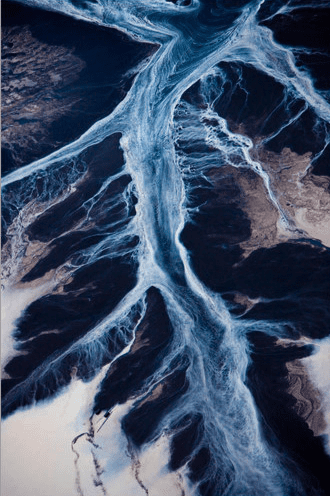
JHF: That people viewing my work will first change their individual behavior—not buy that smartphone. I want them to change their individual behavior and do what’s right for them, for the planet, and mostly, for their children. I mean, that’s what we’re really talking about here, is what are we going to hand to the grandchildren? So I would first like for people to look at my work, consider their involvement, and become concerned, and therefore change their behavior . . . and then speak up and be very, very noisy about what they have learned. I figure we need 5%–7% of people who are radically sustainably-minded citizens, who spend every dollar as if their grandchildren depended on it. If we had 5% or 7%, I think we could really cause change. And everyone must find their own . . . I can’t say, “Buy this toilet paper,” even though I can tell you that if you buy one of the big-name toilet papers, I can show you the old-growth forests in Canada where it’s cut down, and I can tell you about the climate change that it produces. I can tell you about the habitat that was destroyed and the carbon that was released. But it doesn’t work if I say buy green toilet paper. People have to understand and realize that everything matters; every little thing matters.
KB: So examining our individual choices, and then continuing to make this a larger and larger social conversation. . . . Yet many of us find it difficult not to turn away from the realities you photograph. How do you personally cultivate hope while facing these realities? Is beauty part of what nourishes you as an artist?
JHF: There is beauty. And humankind is a wondrous species, and so mysterious. The land that killed 6 million Jews is also the land that produced Bach, Mozart, and Einstein. It’s the same people. Miracles happen. You just basically can’t give up hope. Without hope, there is no light.
KB: Is there anything else you’d like to add before we close?
JHF (laughing): Turn out the lights when you leave the room! Think about the consequences of everything you do. Before you buy that next smartphone, think about the consequences. And if you see any consequences, send me an email, and I’ll go photograph them!
View more of J Henry Fair’s work on his website.
